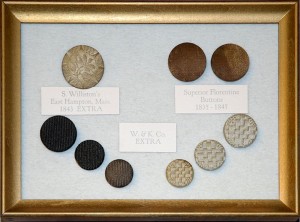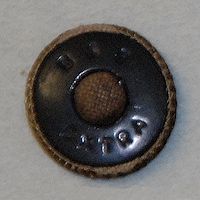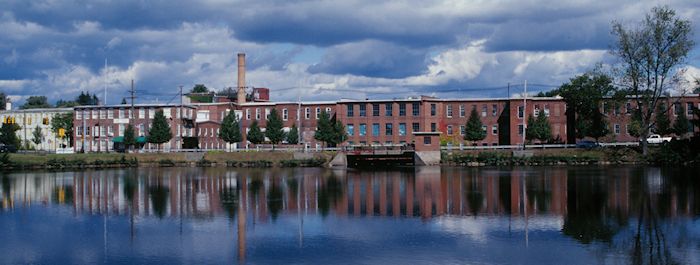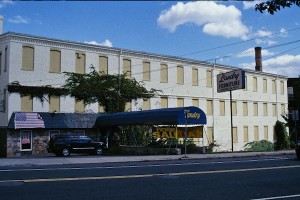
The fabric-covered buttons that made Samuel and Emily Williston’s fortune began humbly enough. Most small-town and rural families, regardless of occupation, had a cash- or barter-producing sideline; Emily, a talented seamstress, made buttons to supplement her family’s meager income. The date is uncertain, but sometime early in the 1820s, she had the opportunity to dismantle a fancy button of foreign manufacture and see how it was made. The several versions of the story are the stuff of legend (and a future blog post); what she and Samuel did with the information is a matter of history.
They organized as many as 1,000 households throughout western Massachusetts – a gigantic cottage industry – in sewing buttons to Emily’s design. Essentially, fabric was cleverly sewn around a wooden center. Emily provided patterns and instruction; Samuel, materials, cartage, warehousing, marketing. The buttons produced income beyond anything the Willistons might have dreamed. The demand for S. Williston buttons was so great that by 1827, Williston created a “budget” line – fundamentally, discounted seconds – of buttons that sold under another name. He wanted the public to associate his brand only with the best-quality product.

The problem was that wooden button centers, if cut across the grain or if there were flaws in the wood, were unreliable. In 1829 Samuel Williston went into partnership with brothers Joel and Josiah Hayden, manufacturers of metal and enameled buttons. They were based in what is now Haydenville, then part of Williamsburg, just north of Northampton. The Haydens mass-produced unbreakable metal button molds, while the Willistons handled sewing and sales.
This raised the question of whether, or perhaps when, the entire process could be mechanized. By 1833 Samuel was aware of an English machine that apparently did the job, but the English, to no one’s surprise, were protecting their patent. There followed many months of unsuccesful Williston-Hayden tinkering as they attempted to re-invent an American version of the process. Eventually Samuel secured the services of Francis Sidney, a Creole whose credentials, besides rum-running, included having worked in a Birmingham, England button mill. Sidney was only too happy to share his knowledge for an appropriate price. On July 4, 1834, the Hayden mill struck the first completely machine-made American cloth-covered buttons.

This heralded the phasing out of the hand-sewn button industry. Meanwhile, Samuel Williston, in his forties already one of the wealthiest businessmen and philanthropists in the state, was considering the industrial transformation of his home town. In 1847 he dammed Broad Brook, creating Nashawannuck Pond and a millrace that could provide power to a group of factories. The first of these was the Williston & Knight Button Company, a three-story brick mill at the foot of Union Street that started production in 1848. Decades later, Samuel Williston’s grandson recalled a building full of “ingenious machines which struck out and covered a button at a single blow.” [1]
Other factories, comprising the present-day One Cottage Street complex, followed, as did the brick house at the intersection of Union Street and Payson Avenue, which was Samuel Williston’s business office. Meanwhile the Williston-Hayden partnership was dissolved, Williston to control every aspect of the fabric button business, the Haydens to concentrate on their metal and lacquered merchandise. [2]


The original button factory — Easthampton’s oldest — still stands, although the cupola and dormer windows have vanished in favor of a simple flat roof. It is has long been the home of the Landry Furniture Company. We hope that the recent announcement that Landry is going out of business does not put the building in danger of being razed. Surely it is a landmark worth preserving.
(For Emily Williston’s views on buttons, please see the post Emily Speaks.)
Notes:
[1] Samuel Williston, Life and Law: An Autobiography (Boston: Little, Brown, 1940), 33.
[2] Much of the narrative is derived from Frank P. Conant, God’s Stewards: Samuel and Emily Williston (Easthampton: The Williston Northampton School, 1991).
Your comments and questions are encouraged! Please use the space below.


My grandfather was Robert Williston Grinnell, born in Searsport, Maine.
Joseph Grinnell established Wamsutta Mills.